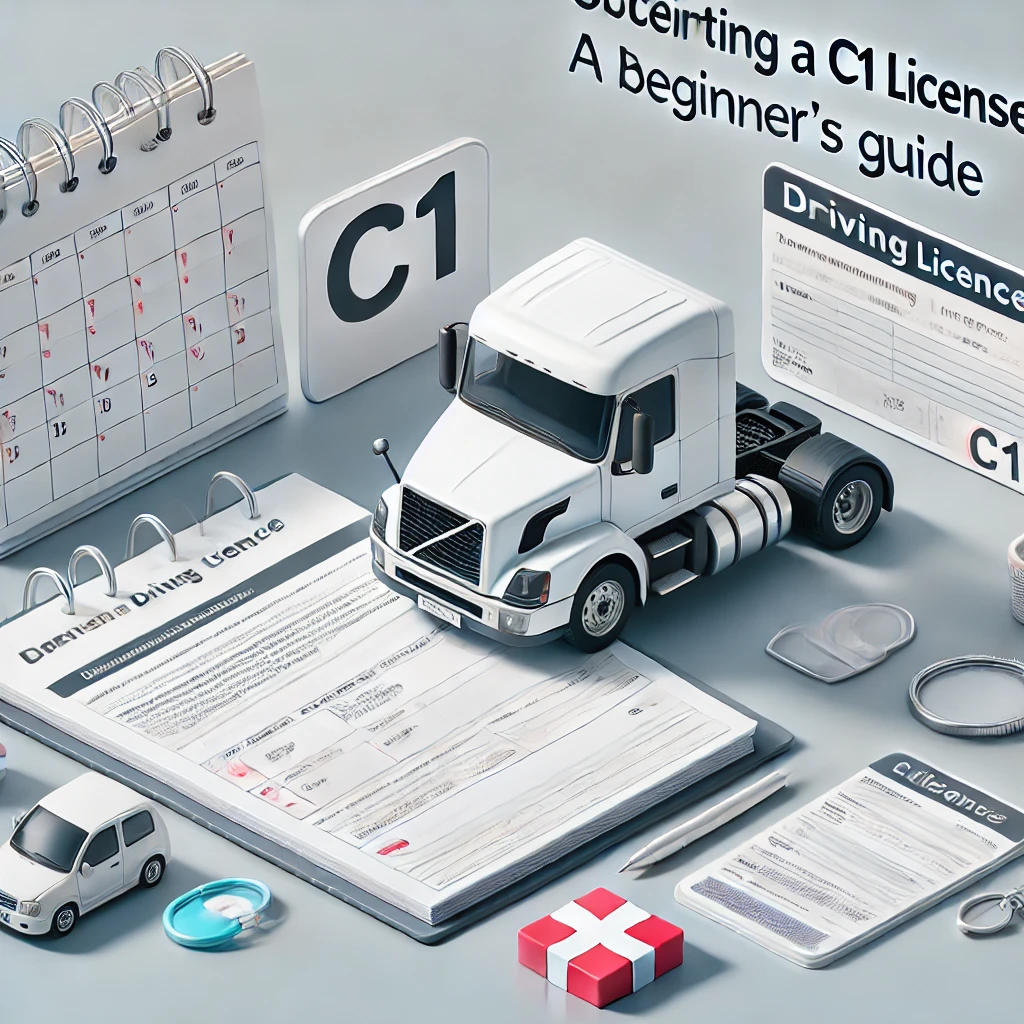Obtaining a C1 Licence: A Beginner’s Guide

If you’re looking to drive medium-sized vehicles, such as delivery trucks or ambulances, obtaining a C1 licence is an essential step. The C1 licence allows you to drive vehicles weighing between 3.5 and 7.5 tonnes, making it ideal for various professional driving careers. This beginner’s guide will walk you through the process of obtaining your C1 licence, from understanding the requirements to completing the necessary training and exams.
Understanding the C1 Licence
The C1 licence is a category on your driving licence that permits you to drive medium-sized vehicles. This category is necessary for those who want to drive larger vans, small lorries, and other commercial vehicles. It’s particularly important for careers in delivery, logistics, and emergency services.
Step-by-Step Guide to Obtaining Your C1 Licence
1. Meet the Basic Requirements
Before you start the application process, ensure you meet the basic eligibility criteria:
- Age: You must be at least 18 years old.
- Driving Licence: You must hold a valid full UK driving licence (Category B).
2. Complete the D2 and D4 Forms
To apply for a provisional C1 licence, you need to complete two forms:
- D2 Form: Application for a driving licence for a medium-sized vehicle.
- D4 Form: Medical examination report.
You can obtain these forms from the DVLA website or your local Post Office.
3. Undergo a Medical Examination
A medical examination is required to ensure you are fit to drive a C1 vehicle. This is done using the D4 form, which must be completed by a registered medical professional. The examination includes:
- Vision Test: To ensure your eyesight meets the required standards.
- Blood Pressure Check: To detect any potential cardiovascular issues.
- General Health Check: To assess your overall physical and mental health.
4. Submit Your Application
Once you have completed the D2 and D4 forms, submit them to the DVLA. If everything is in order, you will receive your provisional C1 licence, which allows you to start your training.
5. Prepare for the Theory Test
The next step is to prepare for the theory test, which consists of two parts:
- Multiple-Choice Questions: Covers road signs, rules, and regulations specific to driving medium-sized vehicles.
- Hazard Perception Test: Assesses your ability to identify and react to potential hazards on the road.
There are numerous resources available to help you study for the theory test, including online practice tests, apps, and study guides.
6. Book and Pass the Theory Test
You can book your theory test online through the DVSA website. Make sure to bring your provisional licence and the necessary identification to the test center. Passing the theory test is essential before you can take the practical driving test.
7. Enroll in a C1 Driver Training Course
Once you have passed the theory test, the next step is practical training. Enroll in a reputable C1 driver training course, where you will receive hands-on instruction on driving a C1 vehicle. The course typically covers:
- Vehicle Controls: Familiarization with the controls and features of a C1 vehicle.
- Driving Techniques: Instruction on handling, maneuvering, and driving in various conditions.
- Safety Procedures: Training on safe loading, unloading, and emergency procedures.
8. Book and Pass the Practical Driving Test
After completing your training, you can book your practical driving test through the DVSA. The test includes:
- Vehicle Safety Questions: Demonstrate your knowledge of vehicle safety and maintenance.
- Practical Driving: A comprehensive driving assessment that includes various road types and traffic conditions.
- Reversing Exercise: Show your ability to reverse and maneuver the vehicle safely.
Passing the practical test will earn you your full C1 licence.
Tips for Success
- Study Regularly: Consistent study and practice are key to passing both the theory and practical tests.
- Choose a Reputable Training Provider: Select a training school with good reviews and experienced instructors.
- Stay Calm and Focused: During tests, stay calm and concentrate on your driving. Take deep breaths if you feel nervous.
- Practice Defensive Driving: Learn to anticipate other road users’ actions and drive defensively to avoid accidents.
Cost of Obtaining a C1 Licence
The cost of obtaining a C1 licence can vary, including fees for the medical examination, theory test, practical training, and driving test. On average, you can expect to pay between £500 and £1,000. It’s advisable to budget for these expenses and compare prices from different providers.
Final Thoughts
Obtaining a C1 licence opens up a range of professional driving opportunities. By following this guide and preparing thoroughly, you can navigate the process smoothly and achieve your goal of becoming a qualified C1 driver. From meeting the initial requirements to passing the necessary tests, each step brings you closer to a rewarding career on the road.
Good luck on your journey to obtaining your C1 licence and safe driving!